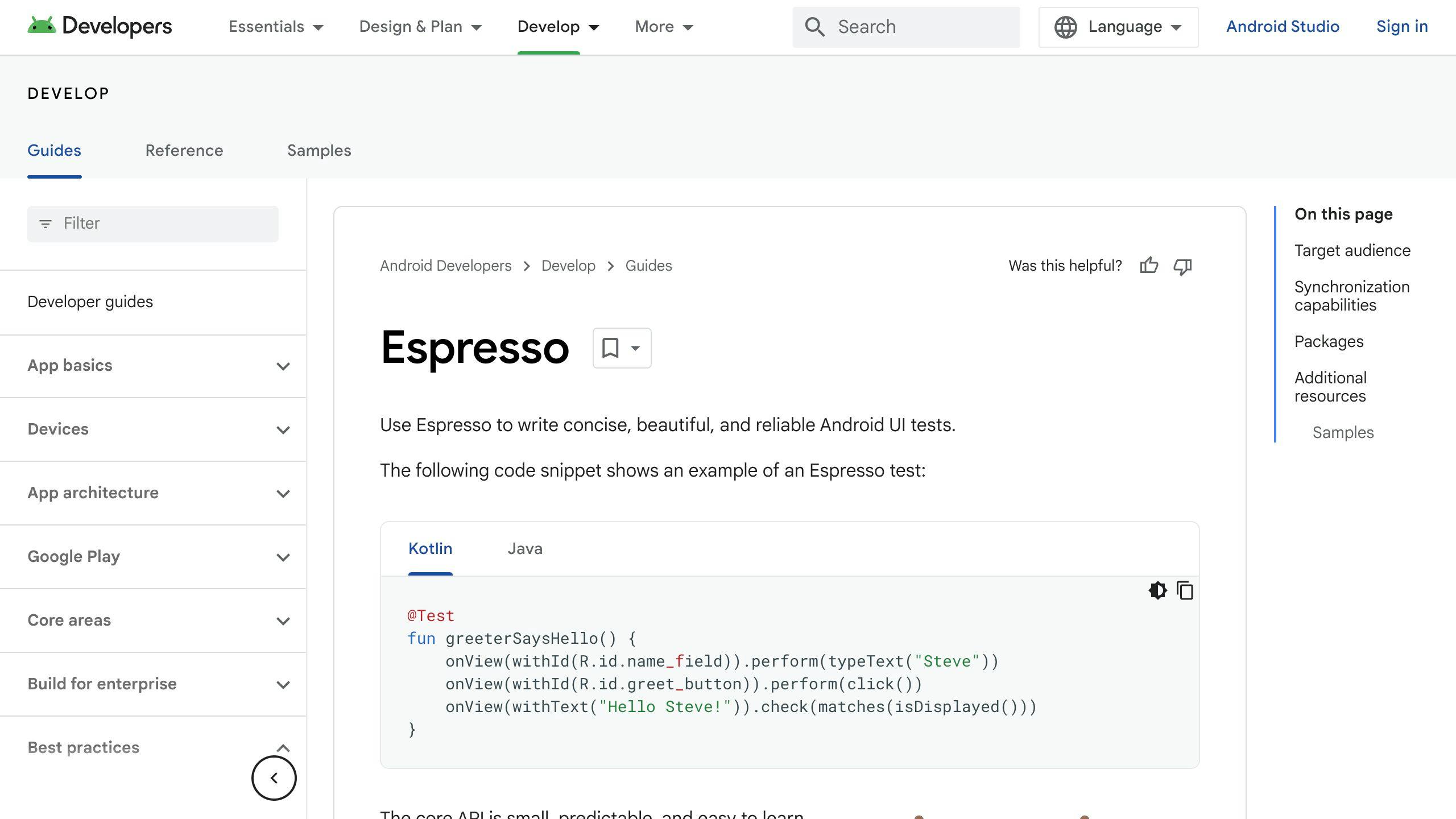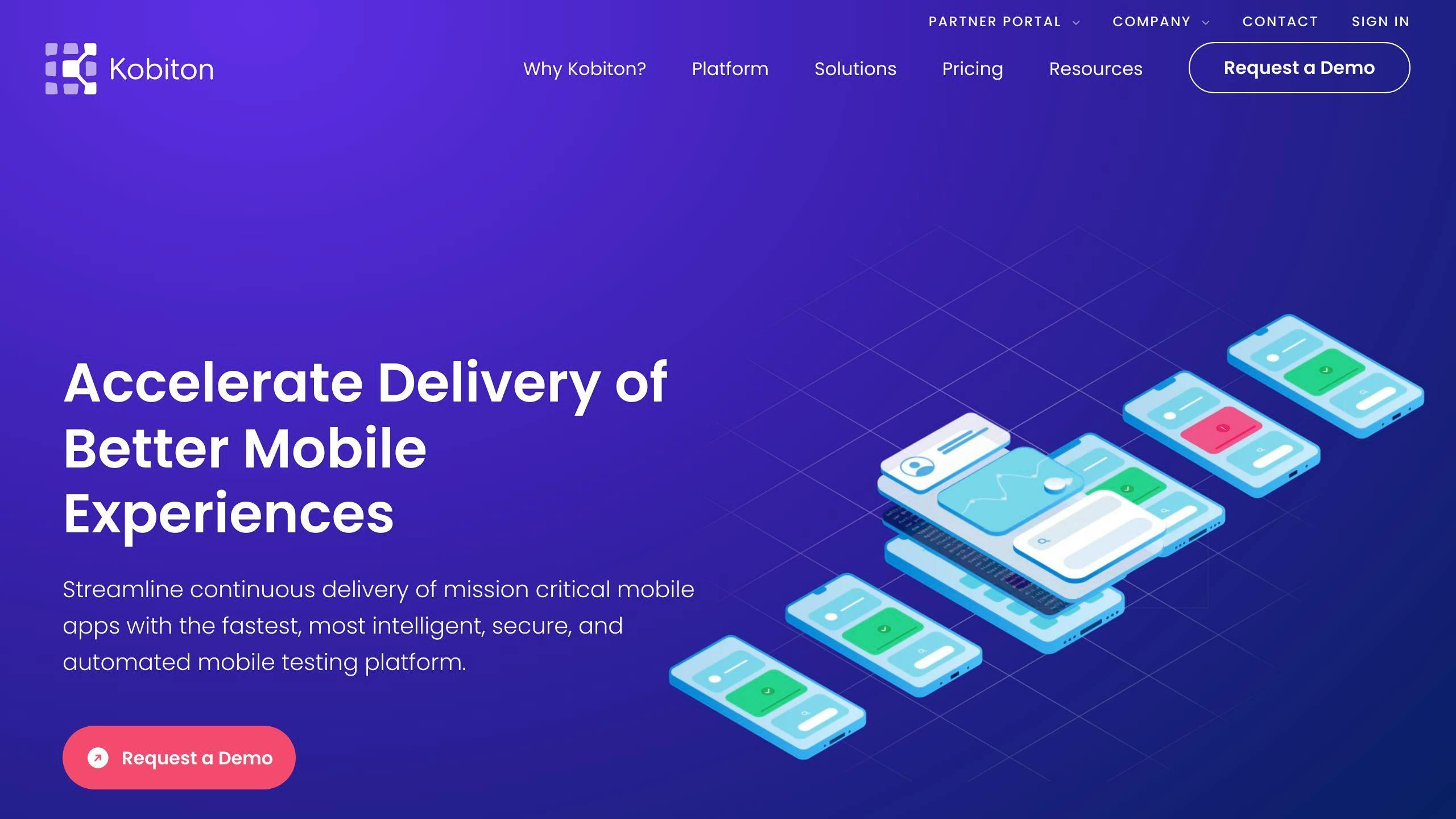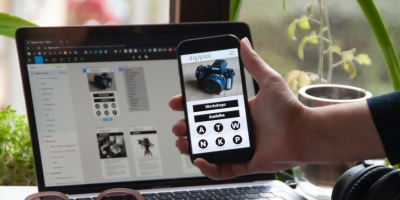Choosing the most popular cross-platform mobile framework involves comparing top options like Flutter, React Native, Xamarin, Ionic, and Kotlin Multiplatform. Each has its strengths and weaknesses, affecting performance, ease of use, and access to native features. Here's a brief overview:
Quick Comparison
FrameworkPerformanceEase of UseAccess to Native FeaturesFlutterHighModerate (Dart required)GoodReact NativeHighHigh (JavaScript)GoodXamarinHighModerate (C#)ExcellentIonicModerateHigh (Web technologies)GoodKotlin MultiplatformHighHigh (Kotlin)Excellent
This comparison aims to simplify your decision-making process by highlighting the key aspects of each framework, helping you choose the right one for your project based on performance, ease of use, and how well they leverage native device features.
Benefits of Cross-Platform Development
Here are some good things about making apps this way:
Challenges with Cross-Platform Apps
But, there are some downsides:
When to Use Cross-Platform Approach?
This approach is great for apps that don't need super detailed control over the phone's features, like business apps, shopping apps, or simple tools. It's also good when you want to make a basic version of your app quickly.
But for games or apps that need to use a lot of the phone's special features, it's usually better to make a separate app for each platform. So, it really depends on what your app needs to do.
Criteria for Comparison
When looking at different ways to make apps that work on both iPhones and Androids, there are a few things to think about:
Performance and Speed
Speed is super important for apps to work well, especially for games or apps with lots of details.
Access to Native Features and APIs
Being able to use what the phone offers can make apps do more cool stuff. It really depends on what your app needs to do.
Code Reuse and Portability
Using the same code for everything makes things easier and keeps down costs. It means less work in updating and fixing the app.
Ease of Use and Learning Curve
A framework that's easy to pick up and has lots of helpful resources is better. It means faster work and less head-scratching.
Maturity and Stability
Frameworks that have been around for a while and update smoothly are less likely to mess up your app.
Community Backing and Job Market
Having a lot of people who support the framework and can work on it means it's more likely to stick around and keep getting better.
By thinking about what your app needs and looking at these points, you can figure out which way of making apps is best for you. There are trade-offs, so knowing what's most important for your project is key.
Comparative Analysis of Frameworks
1. Flutter
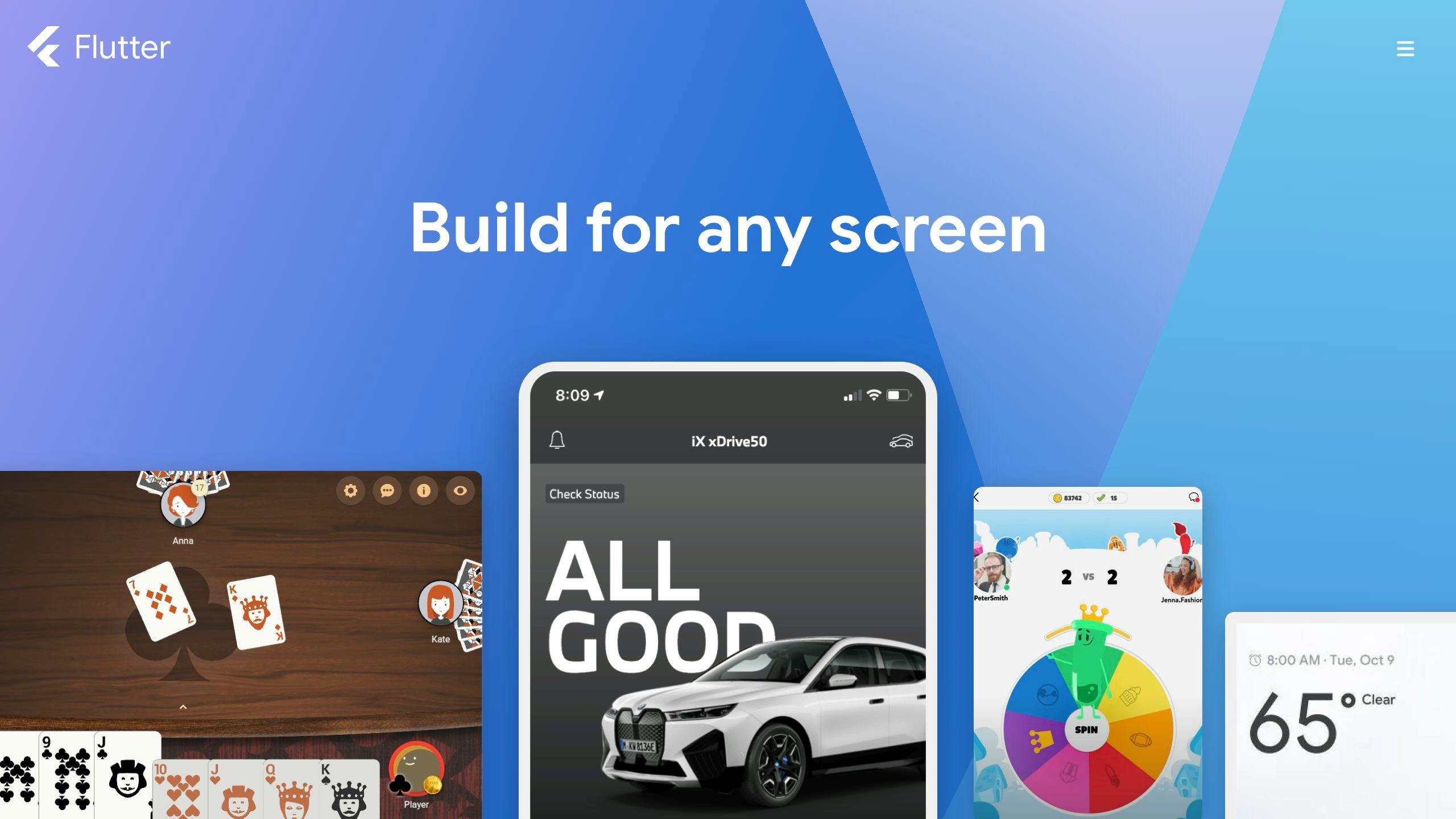
Flutter is a tool made by Google in 2017 to help build apps that work on both iPhones and Android phones. It uses a programming language called Dart. Flutter is known for making apps that run smoothly and look nice.
Performance
Community Support
Ease of Use
Access to Native Features
Real-World Application
Here are some well-known apps made with Flutter:
2. React Native

Performance
React Native works really well and feels almost like apps made just for iPhones or Androids. It uses parts of the actual phone to show things on the screen, which means everything moves smoothly and quickly. But, if an app is very complicated, it might not work perfectly.
In tests, React Native's startup time was a bit slower than apps made just for one type of phone, but not by much. This means it's pretty fast.
React Native also lets developers see changes they make right away without starting over, which helps them work faster.
Community Support
React Native has a lot of people helping out and sharing resources because it's supported by Meta and has been around since 2015. There's a lot of information and tools available for anyone using it.
Many developers are interested in or already using React Native, so it's easy to find help or answers to questions.
Ease of Use
If you already know how to use React and JavaScript, learning React Native is easier. It's set up a lot like React.
But, you'll need to learn some new things specific to making mobile apps, like how to handle touch screens. So, there's a bit of learning to do if you're new to making apps for phones.
Access to Native Features
React Native lets you use many of the phone's built-in features, like the camera and GPS. But, sometimes it might not have the latest updates right away.
For very specific features, developers might need to write some extra code. But generally, React Native tries to make it easy to do what most apps need to do.
Real-World Application
Here are some apps that were made with React Native:
3. Xamarin

Performance
Community Support
Ease of Use
Access to Native Features
Real-world Application
Some apps that were made using Xamarin:
4. Ionic
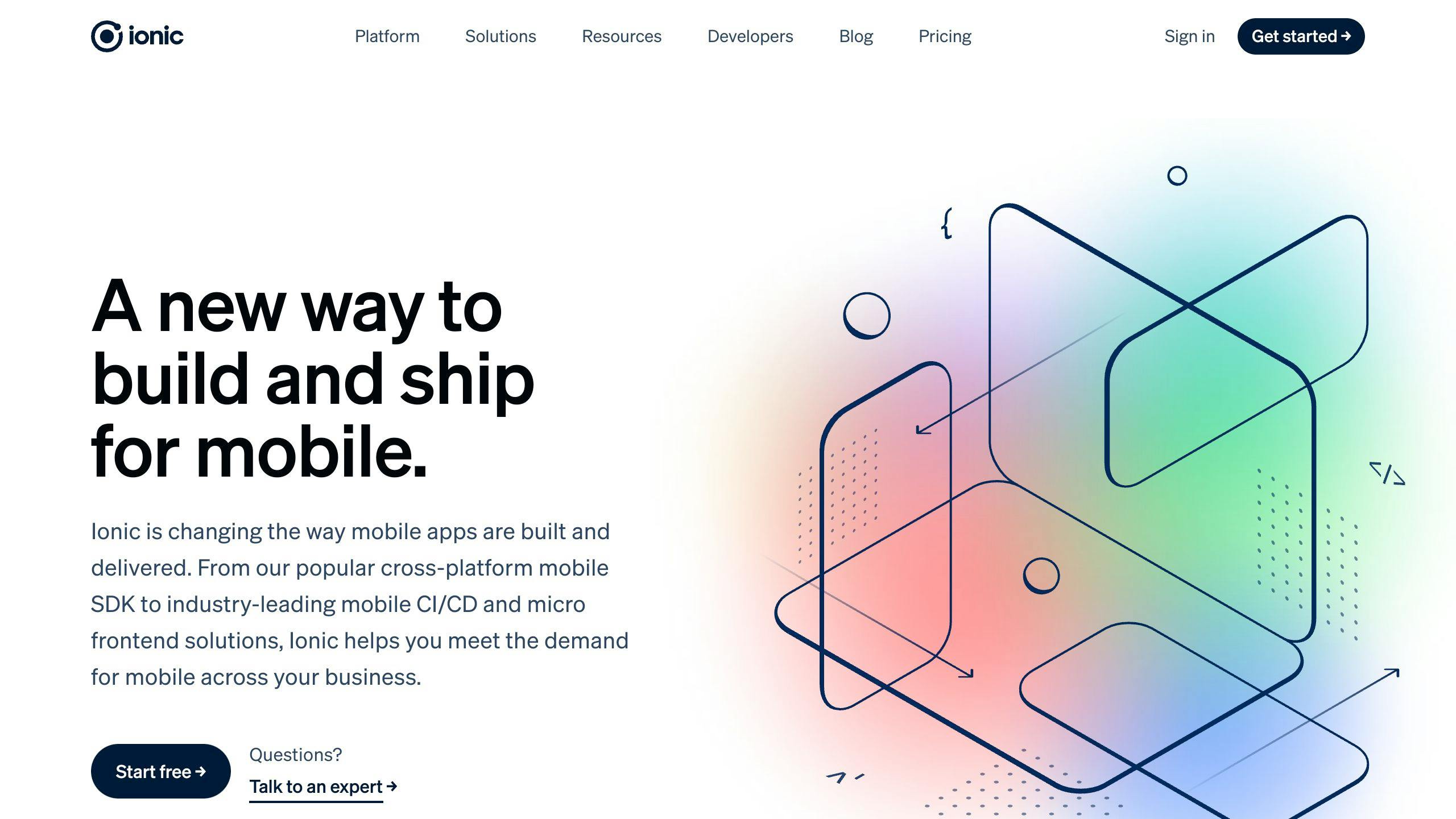
Performance
Ionic uses web stuff like HTML, CSS, and JavaScript to make apps. Because of this, it might not run as fast as apps made directly for Android or iOS. But, Ionic has some tricks like Capacitor and Cordova that let it talk to the phone's features better, which helps it run smoother. For most kinds of apps, Ionic does a good job, but if your app needs lots of fancy graphics, it might struggle a bit.
Community Support
Ionic has a huge group of developers, with over 5 million people using it. There's a lot of help out there like how-tos, guides, and forums where you can ask questions. It works well with Angular, React, and Vue.js because it started with AngularJS. Plus, there are many extra tools and paid services you can use.
Ease of Use
If you know how to build websites, you'll find Ionic pretty easy to start with. It has tools that set up your project quickly and ready-to-use parts that make your app look good. But, when you need to use the phone's camera or GPS, things can get a bit tricky. Learning about Capacitor, which helps with this, takes some time. Also, making your app run smoothly might need some extra skills.
Access to Native Features
Ionic can use the phone's features like GPS and camera through plugins and APIs from Capacitor. There are many plugins available, but sometimes you might have to wait for new ones or make your own for the latest features. Getting really deep into using the phone's features can be hard.
Real-world Applications
Some apps made with Ionic include:
5. Kotlin Multiplatform

Performance
Community Support
Ease of Use
Access to Native Features
Real-World Applications
Some apps that use Kotlin Multiplatform include:
Pros and Cons
Let's look at the good and bad sides of each cross-platform mobile framework in a simple way:
FrameworkGood PointsNot-so-good PointsFlutter- Super quick and smooth
- Instant updates with hot reload
- Can do everything a phone app should
- Nice looking animations and graphics- Not as many people to help out
- You need to learn Dart languageReact Native- Almost as good as a regular phone app
- Lots of people to help
- Can share code with React
- Smooth animations- Takes a bit longer to start up
- Might need some extra code for phone-specific stuffXamarin- Works almost like a regular phone app
- Good for those who know C# and .NET
- Can use all phone features- Harder to learn
- Need Visual Studio
- Fewer people to ask for helpIonic- Tons of people to help
- Uses easy web languages
- Lots of tools and parts to use- Can be slow
- Needs extra stuff for phone features
- Harder to work with phone's built-in stuffKotlin Multiplatform- Really good performance
- Support from JetBrains and others
- Can use all phone features
- Share code from Android- Mainly for Android right now
- Need to learn Kotlin
Key Takeaways
When picking a framework, think about what your app needs to do, what skills your team has, and how much support you might need. The "best" choice really depends on your app's specific needs and what you're working with.
sbb-itb-8abf120
Case Studies
This part of the article shows examples of how different companies have used cross-platform mobile frameworks to create their mobile apps. It's a good way to see how these tools work in real life and what kind of apps you can make with them.
Flutter in Finance
A company called Hamilton Capital in Toronto chose Flutter to make their mobile app. This app lets their customers see how the market is doing, check their investment values, and more.
Outcomes:
Benefits: Flutter was great for making a secure app that needed to show changing data. The feature that lets developers see changes instantly helped them make the app faster.
React Native at Retail Giant
Walmart used React Native to develop Walmart Grocery, an app with over 20 million downloads.
Outcomes:
Benefits: React Native was a good choice because Walmart already knew how to use React and JavaScript. Also, there's a big community of React developers who could help.
Xamarin for Nonprofits
The Danish Refugee Council made their mobile app with Xamarin and Azure services. This app gives refugees important information during emergencies.
Outcomes:
Benefits: Xamarin let them use the same code for different phones while still getting a native app feel. Using Microsoft tools made it easier to work with cloud services.
Ionic Powers Food Delivery
Talabat, a big food delivery service, built their app using the Ionic Framework. The app is used in 8 countries and handles over 5 million orders a month.
Outcomes:
Benefits: Using Ionic, Talabat was able to quickly put together their mobile app. Ionic's many tools and services helped them build a strong app.
Kotlin Multiplatform at Banking App

Cash App chose Kotlin Multiplatform for their Android and iOS apps. This app is used by over 40 million people to transfer money.
Outcomes:
Benefits: Kotlin Multiplatform helped Cash App use the same architecture for iOS that they used for Android, which made sharing code easier. This made developing the app simpler and helped them update both versions at the same time.
Conclusion
Choosing the right tool to make apps that work on both iPhones and Androids isn't simple because each tool has its own good and bad points. But, we can still figure out some general ideas:
The best choice really depends on what you need your app to do, how fast you need it to run, what kind of things you want your app to have, what your team is good at, and other things like that.
Here's a simple guide to help you pick:

In short, think carefully about what you need and what you're good at. Look at the good and bad sides of each tool to find the best one for your app. If you need more help deciding, you can always ask the team at Zee Palm for advice.
Appendix
: Additional Resources and Further Reading
Flutter
React Native
Xamarin
Ionic
Kotlin Multiplatform

Related Questions
What is the most used cross-platform mobile framework?
As of 2023, the frameworks that most developers choose for building apps that work on both Android and iOS are Flutter and React Native, with others like Cordova, Ionic, Xamarin, and NativeScript also being popular. Flutter is at the top with 36% of developers using it, closely followed by React Native at 34%.
Flutter is loved for its ability to make apps look good and work fast on both Android and iOS. React Native is also a favorite because it has a lot of people using and supporting it, making it easier to find help and resources.
Which framework is commonly used for cross-platform mobile app development?
The top picks for making apps for both Android and iOS are Flutter, React Native, Kotlin Multiplatform, and Ionic. Here's why developers like them:
The best choice really depends on what your app needs to do and what skills your team has.
What is the most performant mobile framework?
React Native is known for being fast and is used a lot for making both iOS and Android apps. It was made by Facebook and is good at making apps that work smoothly and look nice. It also lets you use the same code for web apps, which saves time.
Is Maui better than Flutter?
Flutter is often seen as better than .NET MAUI for a few reasons:
However, .NET MAUI might be a good option if you're already using .NET and C# and want to make apps for desktop as well as mobile. But for most mobile projects, Flutter is the better choice because it can do more and has more people supporting it.





